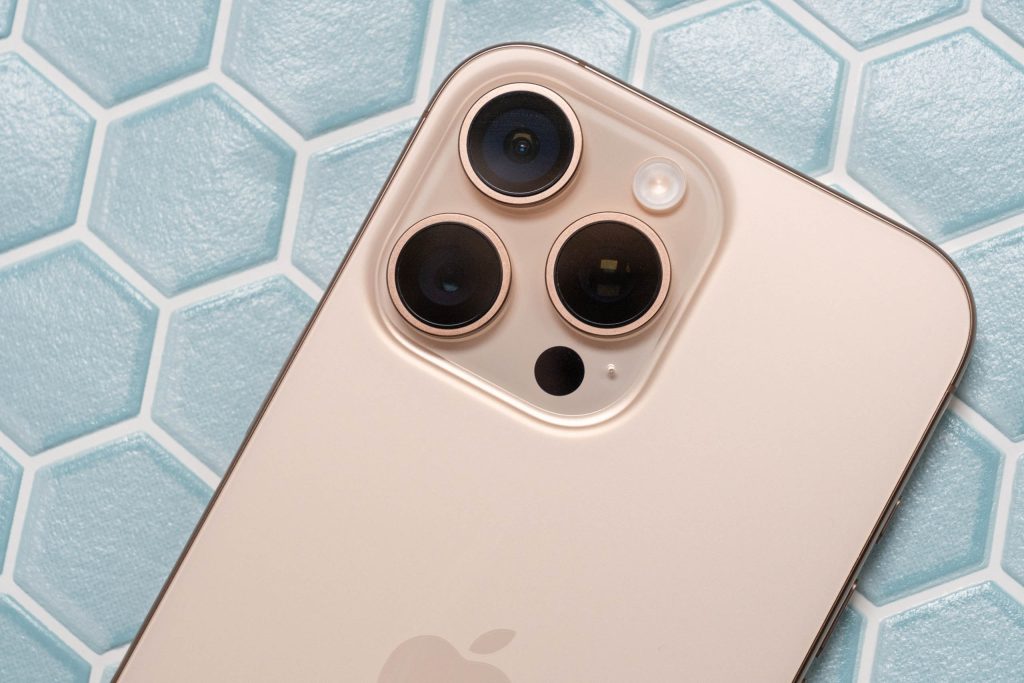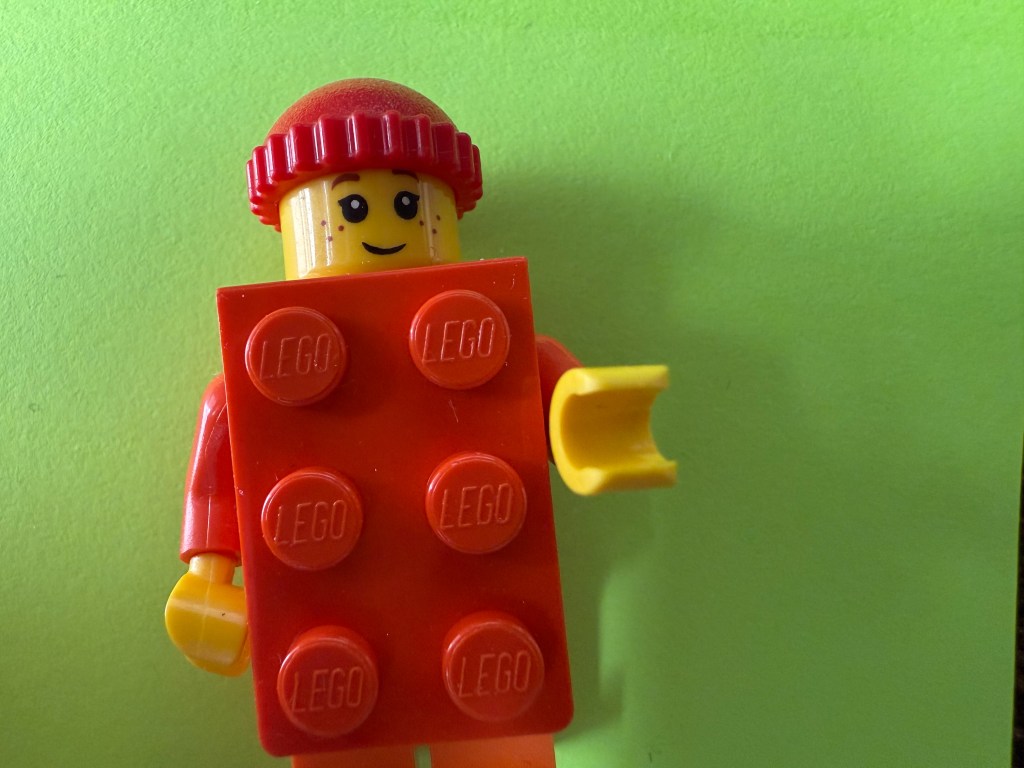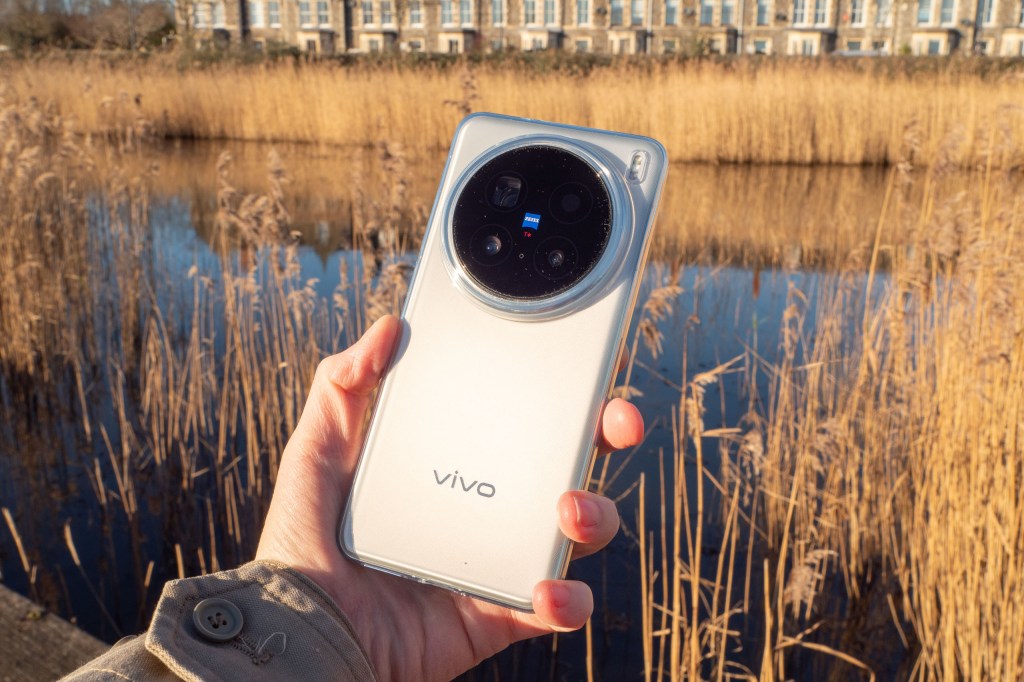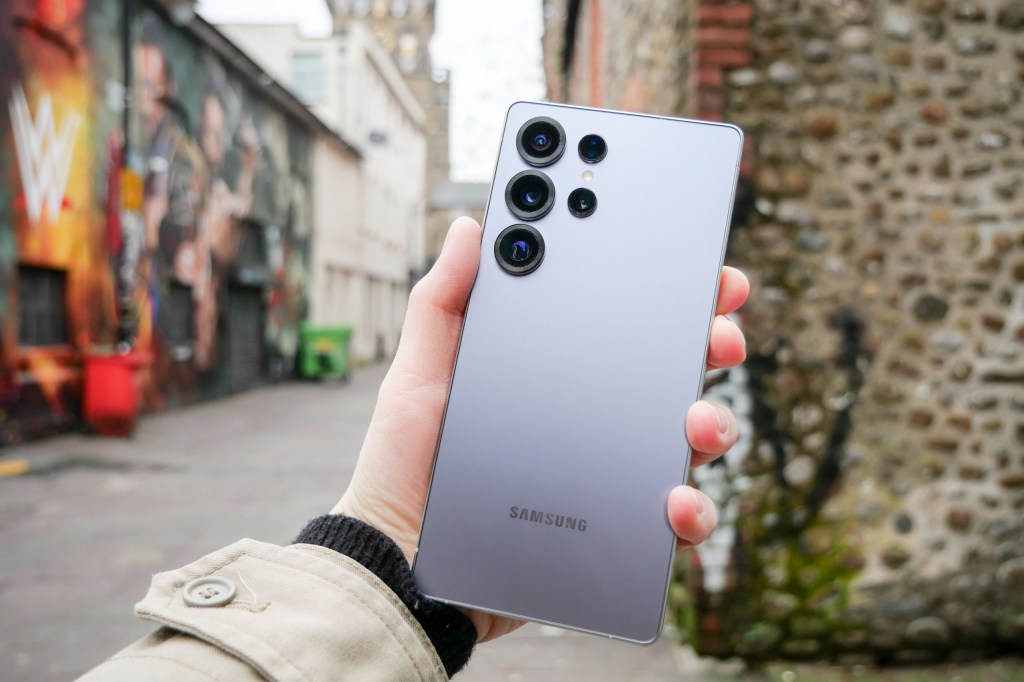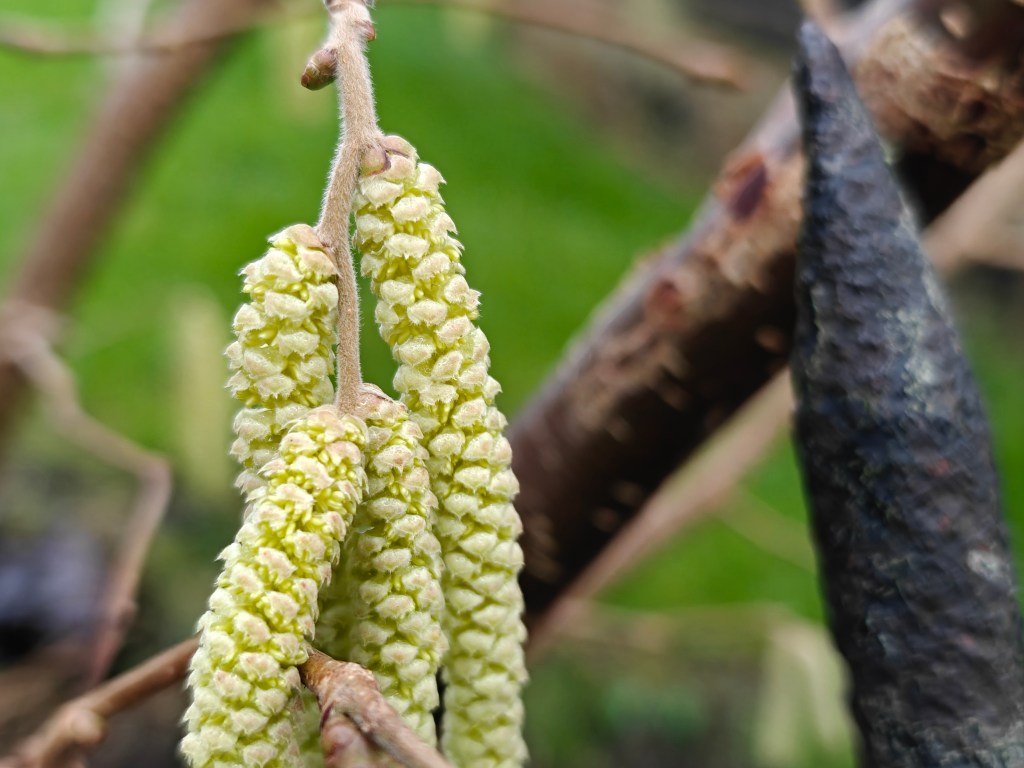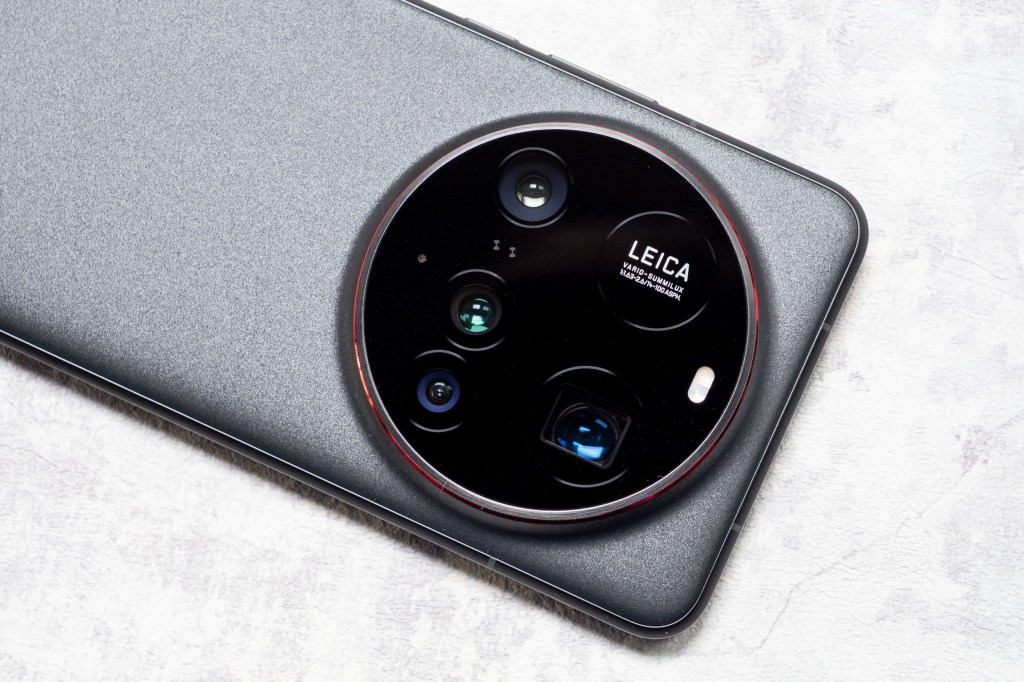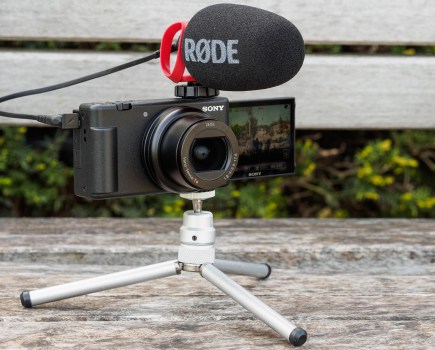You don’t always need specialist equipment for close-ups; the best camera phones are very capable when it comes to macro photography, says Amy Davies.
For those who would like to give macro photography a go but prefer not to buy new kit, there’s always the option of using your phone. A phone has obvious advantages of convenience and cost over cameras, which generally require a lens with macro capability, either for magnification, close-focusing, or both.
Not long ago, clip-on macro lenses and loupes for smartphones were available to buy. These tended to be low in quality, fiddly to use and, since they were usually specific to a phone model, they became obsolete as soon as you upgraded your device. In recent years, flagships and even mid-range phones have come equipped with macro functionality directly in camera. It’s even become a key selling point for many.
If macro photography is of interest to you, and you’re thinking of upgrading your smartphone, consider some of those listed here. These are all high-end smartphones with a price tag to match, but cheaper phone deals can be found by skipping back a generation or more – just check that the older versions offer macro first.
How does phone macro work?
Generally speaking, most smartphones utilise the ultra-wideangle camera for macro work. The phone will detect when you’re attempting to take a close-up picture and automatically switch to macro mode, in most cases. With the iPhone 16 Pro, for example, this gives you the ability to focus as close as 2cm from the subject. The phone will then crop in to give the same angle of view as if shooting with the standard 1x lens, for a more natural appearance. Since you’re switching to a different sensor and lens, there are some situations where image quality may suffer – such as in low light.
Most phones have the option to switch off the macro focusing for each shot if you prefer to use the standard lens – but you will probably need to move further from the subject to achieve focus.
There are exceptions to using the ultra-wide lens, such as the Xiaomi 15 Ultra and Vivo X200 Pro that use the telephoto lens for macro. Some smartphones have dedicated macro cameras, but in practice, we’ve usually found these to be poor performers, particularly when they’re low resolution – some are just 2 megapixels.
Best smartphones for macro at a glance:
- iPhone 16 Pro – Buy now
- Vivo X200 Pro – Buy now
- Samsung Galaxy S25 Ultra – Buy now
- Google Pixel 9 Pro – Buy now
- OnePlus 13 – Buy now
- Xiaomi 15 Ultra – Buy now
Continue reading to find out how we tested the smartphones and why we chose these models…
Why you can trust Amateur Photographer
We spend many hours testing every product we recommend, in detail, in a variety of situations and shooting scenarios, and only use experts for our reviews, so you can be sure that you’re getting the best products. Find out more about our expert writers.
Best overall for macro
iPhone 16 Pro
Amateur Photographer verdict
Great advantages for macro photography in particular, in handling , operation and that impressive new 5x zoom.- 5x zoom
- Convenient camera control button
- Currently well priced
- Good overall image quality
- Low resolution telephoto camera
- Low resolution selfie camera
Specifications at a glance:
| Main camera | 48MP, f/1.78, 24mm, PDAF, OIS, (1/1.28″ sensor) |
| Ultra-wide camera | 48MP, f/2.2, 13mm, PDAF, (1/2.55″ sensor) |
| Telephoto camera | 12MP, f/2.8, 120mm, 5x optical zoom, PDAF, OIS (1/3.06″ sensor) |
| Selfie camera | 12MP, f/1.9 with AF, 23mm, PDAF, OIS (1/3.6″ sensor) |
| Video | 4K 120fps video |
| Screen | 6.3” Super Retina XDR OLED screen, 2000nits peak brightness |
| Battery | 3582mAh battery |
The iPhone 16 Pro employs a triple-lens camera setup, comprising a wideangle, 0.5x ultrawide, and 5x telephoto lens. This is the same as the larger, more expensive iPhone 16 Pro Max. It’s also similar to the iPhone 15 Pro Max before it, although the ultrawide sensor has been upgraded to 48MP, compared to 12MP. However, the lens remains 13mm equivalent and f/2.2. The main sensor is also 48MP, with a 24mm f/1.78 lens, while the 5x telephoto is 120mm f/2.8 equivalent. Despite those two high-resolution sensors, the phone’s standard output remains at 12MP.
Apple is now in its fourth generation of smartphones with macro capability. As on previous models, this mode enables you to get super-close to the subject by automatically switching to the ultra-wideangle camera. You can record both video and still images with the iPhone’s macro mode, and you can also shoot in Apple’s ProRAW format when it is engaged too.
If you’re finding image quality to be low – such as if light levels are poor – you can switch off the macro focusing and revert to using the main camera. You can still get fairly close, so if the subject isn’t particularly small, this can work fairly well. Another option is to switch to Portrait mode to create a shallow-depth-of-field effect. Again, this uses the main camera, so it will work best with subjects which aren’t super-small. Note there’s no macro focusing capability in this mode, nor can you shoot in raw format.
The iPhone 16 Pro also gains a new Camera Control button, which aims to make using the phone a little more like using a real camera. You can press it one to open the camera, then again to take a photo. Sliding your finger along it zooms in and out, too.
Read our full review of the iPhone 16 Pro
Best Vivo for macro
Vivo X200 Pro
Amateur Photographer verdict
With excellent overall photographic ability, and top notch macro results this is a smartphone that I’d love to recommend more widely – but a limited global availability makes it difficult to do so.- Larger than average main sensor
- 200MP telephoto camera
- Very impressive battery life
- Telephoto macro
- Limited availability
- A bit cumbersome
Specifications at a glance:
| Main camera | 50MP, f/1.6, 23mm, PDAF, OIS (1/1.28” sensor) |
| Ultra-wide camera | 50MP, f/2.0, 15mm, AF (1/2.76” sensor) |
| Telephoto camera 1 | 200MP, f/2.7, 85mm, 3.7x zoom, PDAF, OIS, macro AF (1/1.4” sensor) |
| Selfie camera | 32MP, f/2.0, 20mm equivalent |
| Video | 8K 30fps / 4K 120fps video recording |
| Screen | 6.78-inch, 120Hz, 4500 nits peak brightness, Armor Glass LTPO AMOLED screen |
| Battery | 6000mAh, 90W fast charging, wireless charging |
We found the Vivo X200 Pro to be an excellent overall performer that delivers fantastic results across the board. The only downside is its limited availability; initially Vivo announced a ‘Global Release’, but it never really appeared very widely on the UK market. However, we’re still listing it here as if you’re prepared to hunt one down, it comes highly recommended for macro. Elsewhere, its telephoto lens is one of the best on the market, and the camera app is really well featured.
It features three Zeiss lenses with a 50MP main camera that is backed by a larger than average 1/1.28-inch type sensor. There is also a 50 MP ultrawide and a 200MP telephoto camera, which has six special “telephoto capabilities” such as Telephoto HyperZoom, Telephoto Macro, Telephoto Portrait, Telephoto Nightscapes and Telephoto Sunset.

Moving onto the macro mode, there are two options for close-ups. You can either move really close to your subject and wait for the automatic macro mode to kick in, which uses the ultra-wide camera cropped in by default, or switch on the Super Macro mode manually. The latter produces the best results, as it utilises the 3.7x 200MP telephoto camera.
At 85mm equivalent, this camera has an ideal focal length for macro and product photography. Also, by moving further away, you avoid casting shadows on or disturbing skittish subjects like butterflies or bugs. This mode delivers sharper and more detailed macro shots than some dedicated macro lenses on other phones.
Overall, image quality from the X200 Pro is excellent, across a wide variety of conditions. Detail is great, and colours are nicely bright and punchy without being unrealistic – something which can be a big problem for several of the lesser-known brands. Working with Zeiss has clearly worked well to produce high-quality overall images.
Read our full Vivo X200 Pro review
Samsung for macro
Samsung Galaxy S25 Ultra
Amateur Photographer verdict
The Samsung Galaxy S25 Ultra remains an excellent flagship smartphone for photographers, with good close-up capability- 3x high resolution sensors
- 4x lenses
- Advanced AI functionality
- Excellent screen
- Fairly minor camera upgrade from last model
- Very high price
Specifications at a glance:
| Main camera | 200MP, f/1.7, 24mm, PDAF, OIS(1/1.3” sensor) |
| Ultra-wide camera | 50MP, f/1.9, 13mm, PDAF |
| Telephoto camera 1 | 10MP, f/2.4, 67mm, PDAF, OIS, 3x optical zoom, (1/3.52” sensor) |
| Telephoto camera 2 | 50MP, f/3.4, 111mm, PDAF, OIS, 5x optical zoom, (1/2.52” sensor) |
| Selfie camera | 12MP f/2.2, 26mm selfie camera with AF |
| Video | 8K 24/30fps, 4K 30/60/120fps |
| Screen | 6.9-inch 3120×1440 pixel AMOLED, 2600 nits peak brightness, Corning Gorilla Armor 2 |
| Battery | 5000 mAh, 45W fast charging, wireless charging |
The Galaxy S25 Ultra is Samsung’s flagship camera phone, with a vast array of AI photography features inherited from the previous S24 Ultra. Overall it’s one of the best smartphone cameras around, with four cameras on the rear. Of these, three are now high resolution, as the ultrawide camera received a generous 50 MP upgrade from 12MP before.
The AI technology is utilised during image capture and is said to improve night photography, noise performance, zoom quality, and HDR imaging, among others. AI is also relevant in the on-device and cloud-based editing features, like the really useful reflection removal tool. The S25 Ultra also has one of the best screens on any phone, thanks to an excellent anti-reflective coating.
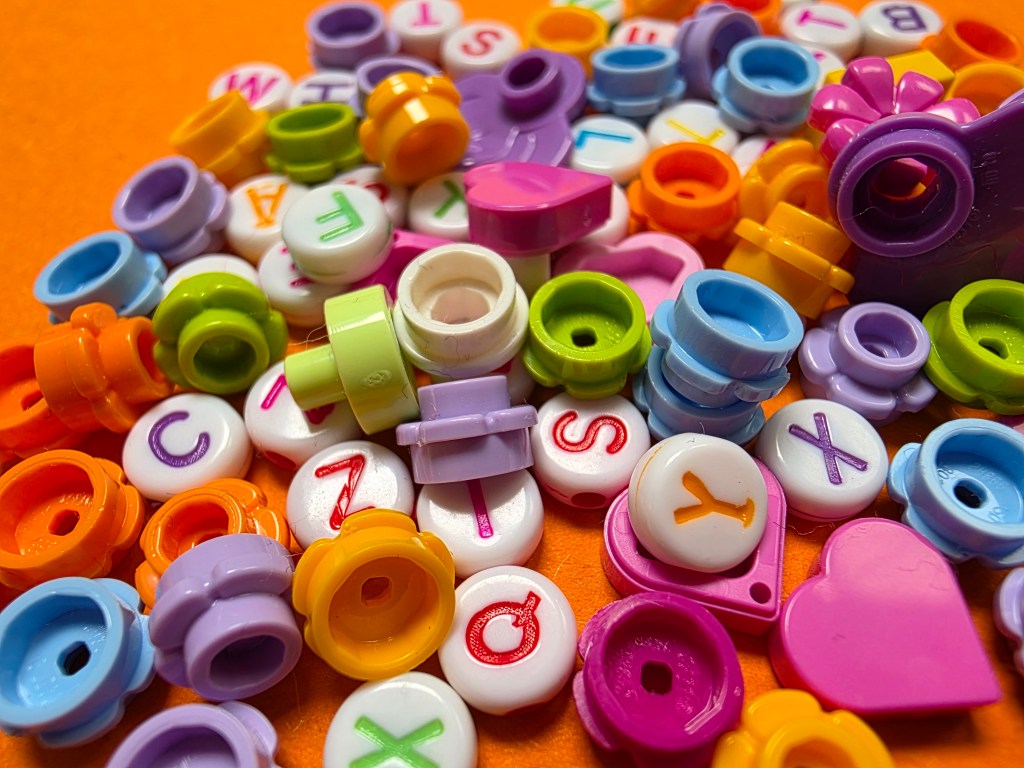
For macro shooting, the good news is that three of the cameras have pretty good close-up capabilities. The bad news, though, is that you’re never quite in control of which one the phone is using. By default, if you point the camera at a close-up object, the phone will switch from the main camera to the ultra-wide-angle camera and give you a cropped (and distorted looking) photo, as well as lower quality results in low-light. Switch to the 3x camera, and the phone now will crop from the 1x camera – giving a pixelated, but relatively pleasing-looking, image. Switch to the 5x or 10x cameras, and the phone will again crop, this time from the 3x camera, giving a pixelated image.
This is all quite frustrating, and the device doesn’t advise you what’s going on until you look at the EXIF data after you’ve taken the shot. However, for the best results, the 5x option (which crops from the 3x camera) looks to give the best results. Other smartphones, though, have really impressive telephoto macro capabilities that use the periscope camera.
Read our full Samsung Galaxy S25 Ultra review
Google Pixel for macro
Google Pixel 9 Pro

Amateur Photographer verdict
A small flagship phone with great build quality and fair macro performance.- Great image quality
- No camera punishment for choosing smaller screen
- Can shoot in raw when shooting macro
- Uses wide-angle camera for macro
- Expensive for additional storage options
- No true 8K video recording
Specifications at a glance:
| Main camera | 50MP, f/1.68, 25mm, PDAF, OIS (1/1.31″ sensor) |
| Ultra-wide camera | 48MP, f/1.7, macro AF (1/2.55″ sensor) |
| Telephoto camera | 48MP, f/2.8, 113mm 5x zoom, PDAF, OIS (1/2.55″ sensor) |
| Selfie camera | 42MP f/2.2 selfie camera with AF |
| Video | 8K video via cloud-based “Video Boost” (upscaling) / 4K 60fps |
| Screen | 6.3-inch, 1-120Hz, 2000 nits peak brightness, Gorilla Glass Victus 2 |
| Battery | 4700mAh battery, 45W fast charging, wireless charging |
Macro functionality was introduced to the Google Pixel range for the first time with the 7 Pro. The Pixel 9 Pro maintains a similar triple-lens array, with standard, ultra-wide and 5x telephoto options. The main sensor is 50MP, with the standard output being 12.5MP. However for our purposes, the significant improvement is that the ultra-wide camera in the Pixel 9 Pro is f/1.7 with 48MP sensor, with macro autofocus.
As with most macro-capable smartphones, the Pixel 9 Pro will automatically detect when attempting to focus close to a subject and switch to macro mode using the ultra-wide camera. With it enabled, you can focus as close as 3cm. This can be overridden when not wanted for certain conditions, but again, you won’t be able to focus as closely.
You can shoot both video and stills when close-focusing, and as a bonus, you can record in RAW format when using macro mode, since this is accessible in the standard Photo setting. There is also a Pro mode to control exposure, shutter speed, and white balance.
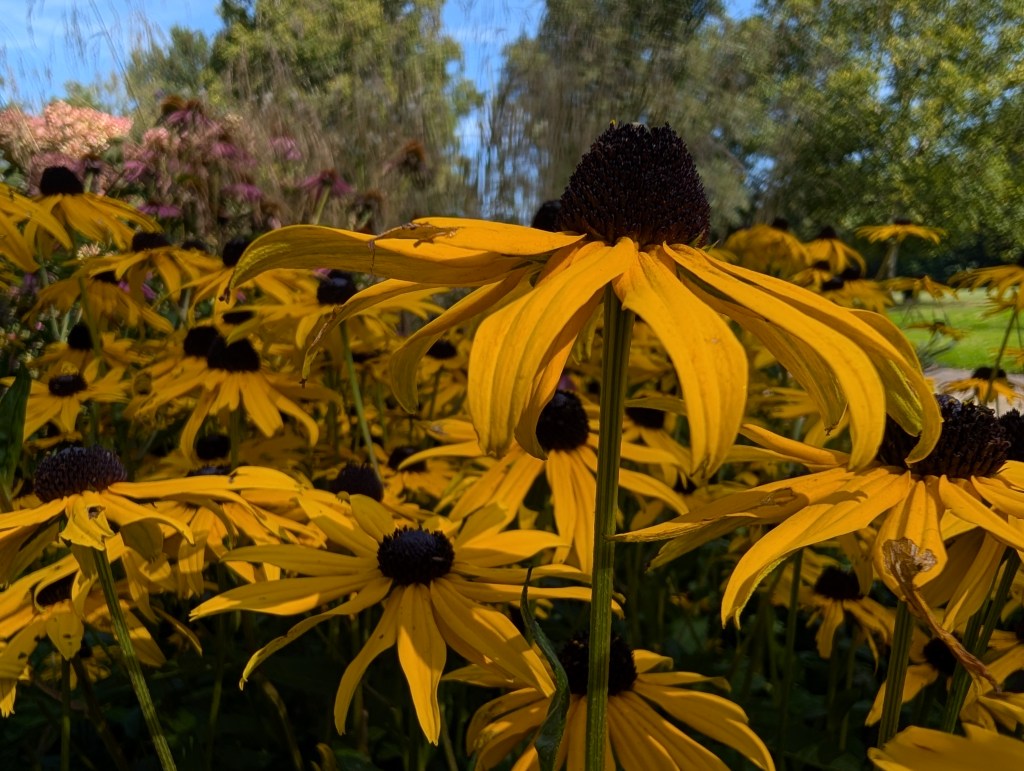
Using the ultrawide lens for macro is pretty common, but we generally find it doesn’t yield the very best results – and the same is true for the Pixel 9 Pro. While the macro results are perfectly adequate, shooting in this way requires you to step into the available light which doesn’t help matters. Better results can be seen from other high-end Android models that offer telephoto macro, such as the Xiaomi 15 Ultra and the Vivo X200 Pro.
Portrait mode is also available and, again, can be useful for creating shallow-depth-of-field images of macro-type subjects in certain conditions. But this will work best with subjects that aren’t particularly small.
Read our full Google Pixel 9 Pro review
OnePlus phone for macro
OnePlus 13
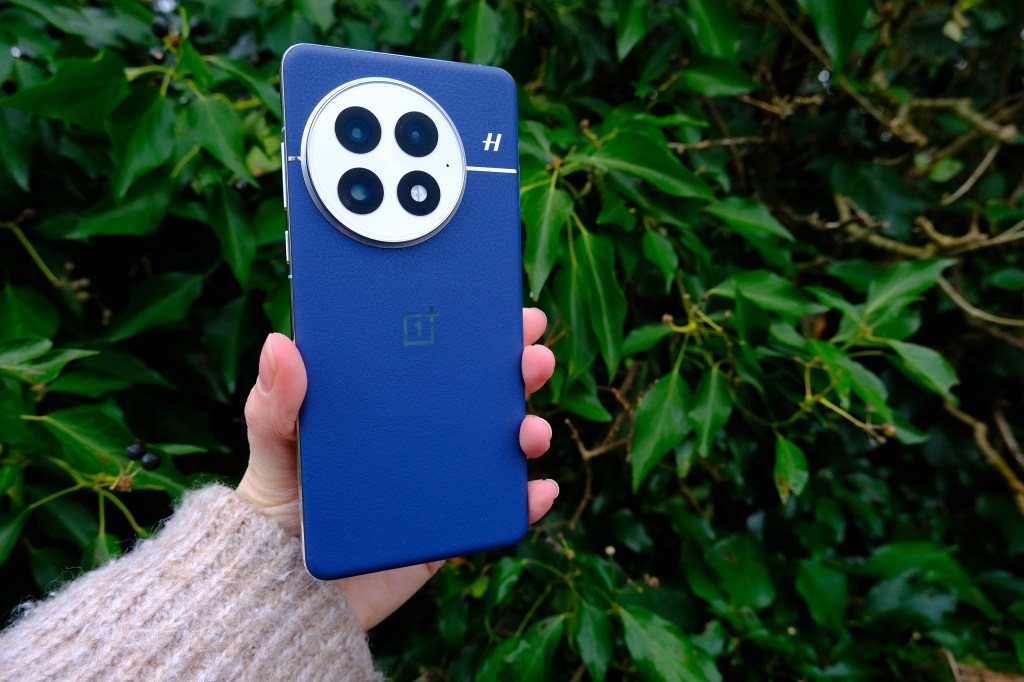
Amateur Photographer verdict
This is a great all-round phone from OnePlus with fantastic cameras, features, build and design. It’s one of the best phones for its price point.- Great value, all-round flagship
- Excellent battery life
- Hasselblad partnership on cameras
- Premium build quality
- Selfie camera still fixed focus only
- No 4K 120fps video
Specifications at a glance:
| Main camera | 50MP, f/1.6, 23mm, (1/1.4″ sensor) PDAF, OIS |
| Ultra-wide camera | 50MP, f/2.05, 15mm, (1/2.75 sensor) PDAF |
| Telephoto camera | 50MP 3x Triprism telephoto, f/2.6, 73mm, (1/1.95″ sensor), PDAF, OIS |
| Selfie camera | 32MP, f/2.45, 21mm (1/2.74″ sensor), fixed focus |
| Video | 8K 30fps on rear cameras, 4K 60fps |
| Screen | 6.82inch screen, 1-120Hz dynamic, 1600/4500 nits, Ceramic Guard glass |
| Battery | 6,000mAh Silicon NanoStack battery |
Historically OnePlus phones have boasted high-end specs for less money, and things are no different with its latest OnePlus 13. Improvements have been made to both hardware and software, with its upgraded triple-camera setup a product of an on-going collaboration with Hasselblad, combined with OnePlus’ most advanced imaging software. Yet the OnePlus 13 goes for a significantly lower price than equivalent models from the likes of Apple and Samsung, starting at £899 for the 256GB version.
There are three cameras onboard, with the main wideangle camera combining a 50MP sensor with an optically stabilised 23mm f/1.6 equivalent lens. The other two cameras comprise a 50MP ultra-wideangle with a 15mm f/2 lens, plus a 50MP 73mm f/2.6 equivalent 3x telephoto with OIS. Digital zoom can reach up to 120x.
In the default ‘Photo’ mode you can shoot with the three lenses and digital zoom options, as well as adjust exposure compensation, aspect ratio, flash and timer. Further control can be taken in Master mode, with the option to ISO, shutter speed and white balance. The phone switches to night mode automatically when it detects low light, you can also opt for night mode yourself under the “more” tab.
Of most interest to us here, though, is the ‘Macro shot’ feature, which allows you to take close-up photos. This will turn on automatically when you get very close to a subject. You can also turn it on manually via the menu, which then activates the telephoto lens for macro. You can also leave it on autofocus, or change to manual focus to adjust focusing yourself, which works well.
In use, the OnePlus 13 delivers great results in a range of environments, and from all the lenses. Colours are vibrant and pleasing without becoming over-saturated, with plenty of detail shown, too.
Read our full OnePlus 13 review
Xiaomi phone for macro
Xiaomi 15 Ultra
Amateur Photographer verdict
For photographers looking for the best smartphone for their needs, the Xiaomi 15 Ultra remains pretty much the king. It’s a shame to no longer have the variable aperture for the main lens- Class leading one-inch type sensor
- 4x high-resolution lenses
- Leica partnership
- Great photography kit available
- Very high price
- Not available in all markets
- Selfie camera still doesn’t have AF
- Main lens aperture no longer variable
Specifications at a glance:
| Main camera | 50MP, f/1.63, 23mm (1″ Sony LYT-900 sensor) PDAF, OIS |
| Ultra-wide camera | 50MP, f/2.2, 14mm (1/2.76″ sensor) PDAF |
| Telephoto camera 1 | 50MP, f/1.8, 70mm 3x optical zoom, (1/2.51″ sensor) PDAF, OIS |
| Telephoto camera 2 | 200MP, f/2.6, 100mm 4.3x optical zoom, (1/1.4″ sensor) PDAF, OIS |
| Selfie camera | 32 MP, f/2.0, 21mm (wide), (1/3.14″ sensor) |
| Video | 8K video at up to 30fps, 4K video at up to 120fps |
| Screen | 6.73-inch, 3200x1400pixel, 3200 nits peak brightness, 120Hz AMOLED screen |
| Battery | 5410mAh battery with fast and wireless charging |
Xiaomi’s latest flagship, the 15 Ultra, is the best smartphone you can buy right now for photography. It has four cameras, including a 23mm equivalent f/1.63 main camera, 14mm f/2.2 ultra-wide, 50MP f/1.8 telephoto, and 100mm f/2.6 periscopic telephoto. Three of these have 50MP sensors, while the 100mm has a super-high resolution 200MP sensor for improved digital zoom. All are fronted by Leica Summilux branded lenses, a fine marker of quality.
Not only that, but the main sensor is of the one-inch type, which is much larger than sensors found in almost every other smartphone out there – and certainly bigger than from the mainstream brands of Samsung, Apple and Google.
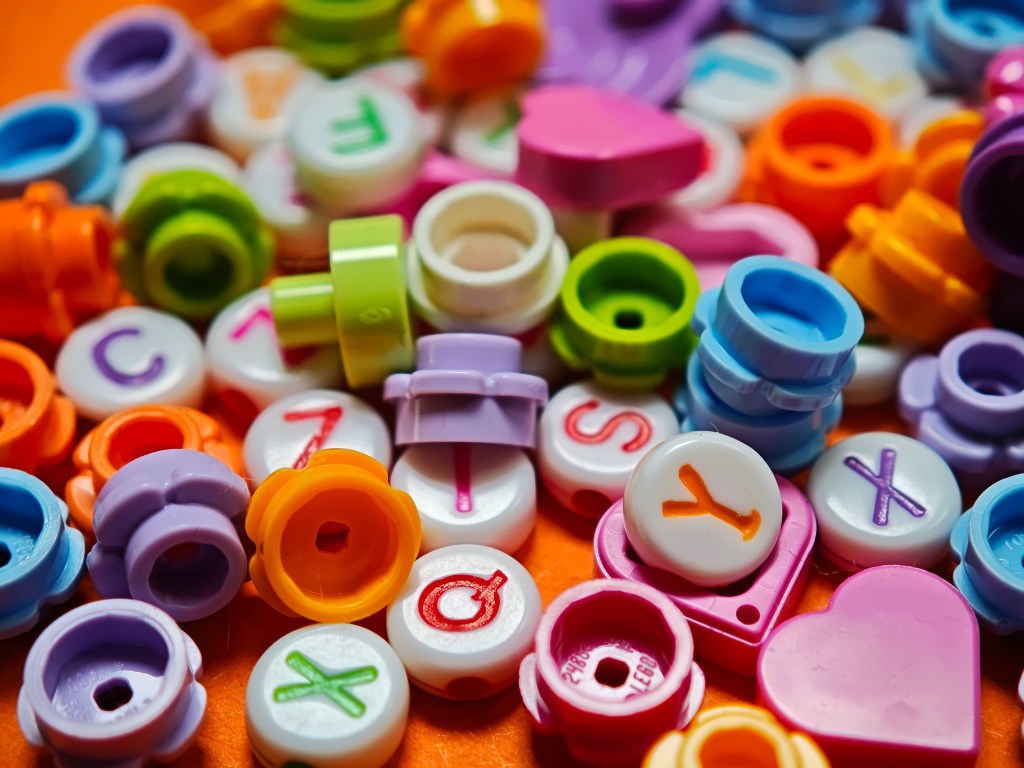
Macro shooting is an area where this phone really excels. The telephoto macro option leads to highly detailed results – we’d love to see a similar approach from the bigger names, too. The 15 Ultra produces macro shots which are much better than the Samsung Galaxy S25 Ultra, the iPhone 16 Pro Max or the Google Pixel 9 Pro, although it’s pretty similar to some other Chinese models, such as the Vivo X200 Pro.
One real bonus treat for photographers is the optional Photography Kit. With this, you get a detachable grip that provides real physical controls, including shutter and video buttons, a zoom rocker, and a command dial. It also gives extra battery life, while a special phone case allows the use of 67mm filters. What’s more, you also get an add-on thumb grip that provides a much more secure hold.
All these high-level specifications don’t come cheap though. The Xiaomi 15 Ultra will set you back £1,299, putting it in the same realm as the likes of the Samsung S25 Ultra and the iPhone 16 Pro Max. The Photography Kit adds another £179.
Read our full Xiaomi 15 Ultra review
8 Tips for shooting macro with your smartphone
To get the most from your smartphone when shooting macro, give these tips a try to boost your shots.
1. Know when to switch it off
Sometimes, the dedicated macro mode can do a worse job than leaving the standard lens to it. If you don’t need to get super-close, switch it off and see how the main sensor copes first.
2. Shoot RAW if you can
For maximum flexibility, shooting in RAW (+JPEG/HEIF simultaneously, usually) gives you scope to edit your smartphone macro shots after the fact, or by using apps such as Snapseed. Not all smartphones offer the ability to shoot raw and macro at the same time.
3. Experiment with digital filters
Most smartphones include some inbuilt digital filters. Try experimenting with black & white and macro, for example.
4. Adjust exposure
Even smartphones without full manual control give you some degree of tweaking. Using the onscreen slider to add some positive exposure compensation can brighten up close-up subjects to good effect.
5. Turn your phone upside down
To get super-close to some subjects, a rotation of the smartphone – so the screen is upside down and the lenses at the bottom – can provide a better angle. It’s a simple tip, but it’s easy to fail to realise the difference it makes.
6. Use a smartphone tripod
To remove the risk of shake, you could use a phone tripod or a smartphone adapter for your existing tripod. You could also utilise the smartphone’s self-timer (usually 3 seconds or 10 seconds) so that you’re not touching the phone at the point of capture.
7. Portable LED lights
Another potential accessory you might to use is portable LED lights to illuminate the scene, especially for very close-up scenes. This will help to produce clearer, sharper details, especially in situations where light is low in the first place.
8. Use the telephoto lens
If your smartphone doesn’t have a dedicated macro lens/capability, but it does have a zoom lens, try using that to recreate the appearance of close-ups.
Read more tips for shooting macro on smartphones and check out the best camera phone accessories. to complemetn your setup.
See our smartphone reviews and find more tips for smartphone photography below:
- Best photo apps and photography apps for phones
- The best budget camera phones
- Black and white smartphone photography guide
- How to take portraits on a smartphone


